Log in or create new account to save this product to your wishlist.
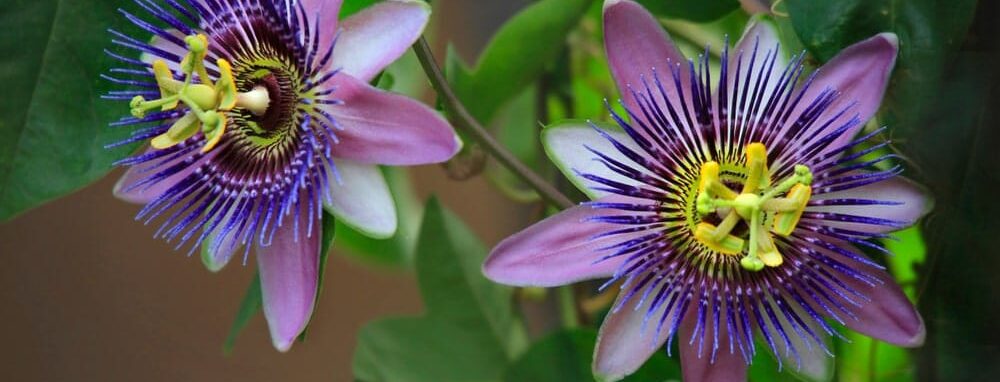
All You Need to Know about Growing and Caring for Passion Flower
With their intricate flowers and extravagant stems, passion flowers are a joy to look at. If you want to know how to grow and care for them, you have come to the right post.
The Passionflower, part of the Passifloraceae family, is a versatile perennial plant native to North and South America. These rapid growers bloom with exotic, fragrant flowers from mid-summer to frost, notable for their complex beauty and brief lifespan of just one day. Passion flowers, including the popular Passiflora edulis and the striking passion flower climber varieties, are celebrated for their stunning blooms and, in some cases, edible but not particularly flavourful fruits, making them a fascinating subject for gardeners and enthusiasts alike. Many varieties are adapted to harsher climates and can survive in UK gardens and, of course, in greenhouses.
- Passion flower Profile
- Selecting the right passion flower variety
- Planting passion flower
- Support and care
- Caring for your passion flower
- Dealing with common pests and issues of passion flowers
- Passion flower FAQs
- Ready to go?
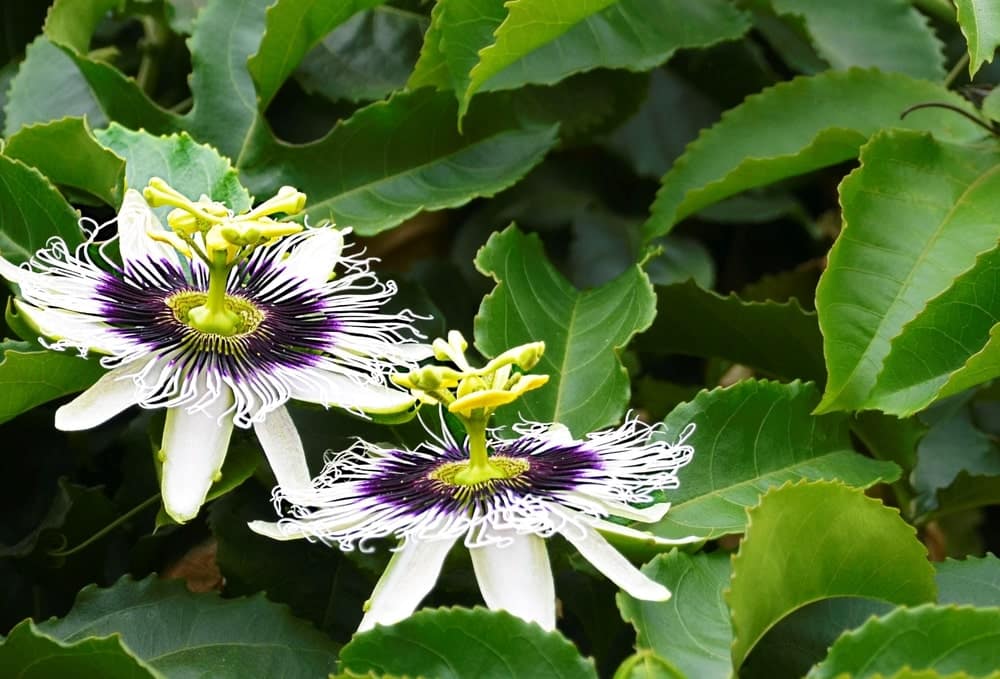
Passion flower Profile
- Origin: Passion flowers are native to tropical and subtropical regions of the Americas, Asia, and Oceania.
- Natural habitat: They are commonly found in humid, tropical and subtropical climates with well-drained soil. Some species are also known to thrive in more temperate regions.
- Substrate: Passion flowers prefer well-drained, moderately fertile soil with a slightly acidic to neutral pH.
- Water requirements: They require regular watering, especially during dry periods, but it’s essential to avoid waterlogging.
- Colours: Passion flowers blooms in various colours including shades of purple, blue, pink, red, and white.
- Flowering time: Depending on the species, passion flowers typically bloom from early summer to early fall. Some varieties may also produce blooms year-round in suitable climates.
- Size: Passion flowers can range in size from compact vines to sprawling climbers. Some varieties can reach heights of 10–20 feet.
Selecting the right passion flower variety
When selecting the proper passion flower variety for your garden, understanding the diverse options available and their specific needs is crucial. Here’s a breakdown to guide you.
Climate and Hardiness
- Most passion flowers thrive in rather tropical zones, with some varieties requiring winter protection.
- Hardy types like Passiflora incarnata can withstand cooler climates, while Passiflora vitifolia is suitable for warmer areas.
Growth and Appearance
- Passion flowers are predominantly evergreen, showcasing dark green leaves with blooms that vary in colour from white to purple.
- Over 500 species exist, differing mainly in colour and appearance, with most trained on vertical structures like trellises or fences.
Special Considerations
- For gardeners in colder regions or those with limited outdoor space, some species are better suited to greenhouse or conservatory growth.
- Selecting disease-resistant varieties, such as those grafted onto yellow fruited subspecies rootstock, can help minimize common pests and issues.
Planting passion flower
As soon as you picked the right variety for you, the planting can begin! Here is what to look out for:
Preparation
- Timing: Plant in spring after all danger of frost has passed to give your passion flower a good start.
Location: Choose a spot that receives full sun to partial shade, ensuring well-drained, fertile soil. Passion flowers prefer a warm, sheltered location. - Soil: Opt for sandy, well-draining soil, although they can grow in heavy clay soil. The soil should be rich in organic matter.
Planting steps
- Ground preparation: Dig a hole three times the diameter of the root ball and about 1.5 times as wide. The depth should match the root ball’s size.
- Planting: Set the plant in the hole and backfill it with the original soil. Space plants 5 to 6 feet apart to allow for growth and air circulation.
- Watering: Immediately after planting, water the plant thoroughly and keep the soil evenly moist, especially in the absence of rain.
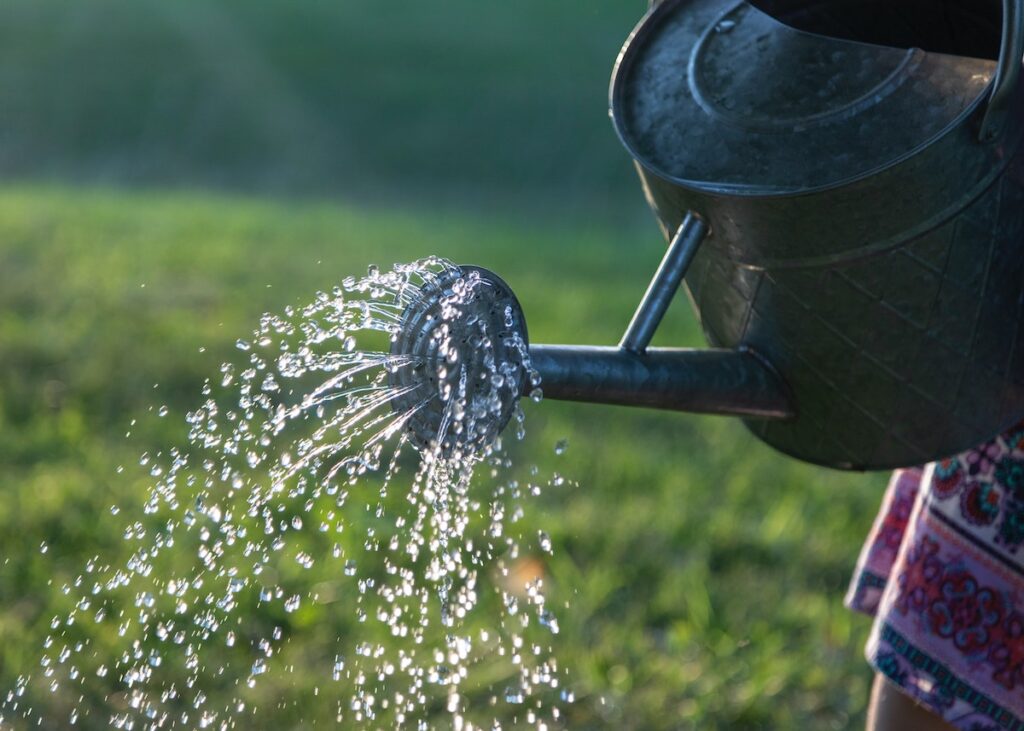
Support and care
- Trellis: Passion flower vines require a trellis or another support system. Train the vines by weaving them through the trellis or tying them with soft, biodegradable twine.
- Feeding: If planting in containers, remember they’ll need to be fed and watered more often.
- Disease prevention: Planting in the right spot with good quality, fast-draining soil and providing plenty of water can help prevent diseases.
Caring for your passion flower
Caring for your passion flower involves a blend of regular maintenance and understanding the plant’s needs. Here’s how to ensure your passion flower thrives.
Watering and soil requirements
- Passion flowers prefer well-draining soil and should be kept well-watered, especially during dry spells. However, avoid overwatering to prevent root rot.
- The ideal soil is sandy and rich in organic matter, ensuring adequate drainage.

Fertilisation and pruning of passion flower
- Fertilise your passion flowers in spring and mid-summer to support growth and flowering. A balanced, general-purpose fertiliser is recommended for heavy feeders like passionflowers.
- Prune in early spring to manage size, remove deadwood, and encourage fuller growth. After flowering, cut back to maintain neatness or remove damaged growth in spring.

- Organic fertiliser
- Slow absorption
- Works for 120 days
Winter care and disease prevention
- Consider overwintering passion flowers indoors or growing them as annuals. Passiflora needs winter protection in the UK, though sometimes Passiflora caerulea and their hybrids can manage without.
- To prevent fungal diseases, clean up fallen leaves in fall, water from below, and ensure plants are in full sun. Fungicides sprayed in early spring can also help.
- Regularly inspect for signs of disease or pests, removing infected material promptly to prevent spread.
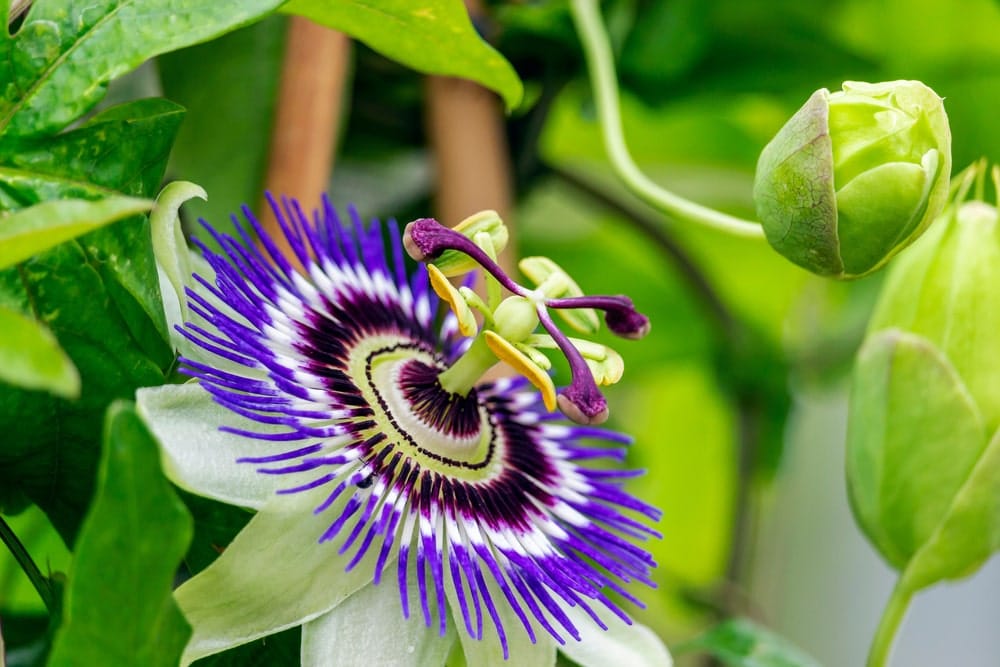
Dealing with common pests and issues of passion flowers
Dealing with common passion flowers problems requires a multifaceted approach to ensure the health and vitality of these lovely plants. First you need to be able to identify the issue, to combat it effectively.
Pests
- Aphids, whiteflies, & spider mites: Combat these pests using sprays of insecticidal soap to safely and effectively reduce their populations without harming the plant.
- Scale, mealy bugs, & thrips: Apply a food-grade insecticide for control. Regular inspections and prompt treatment can prevent significant damage.
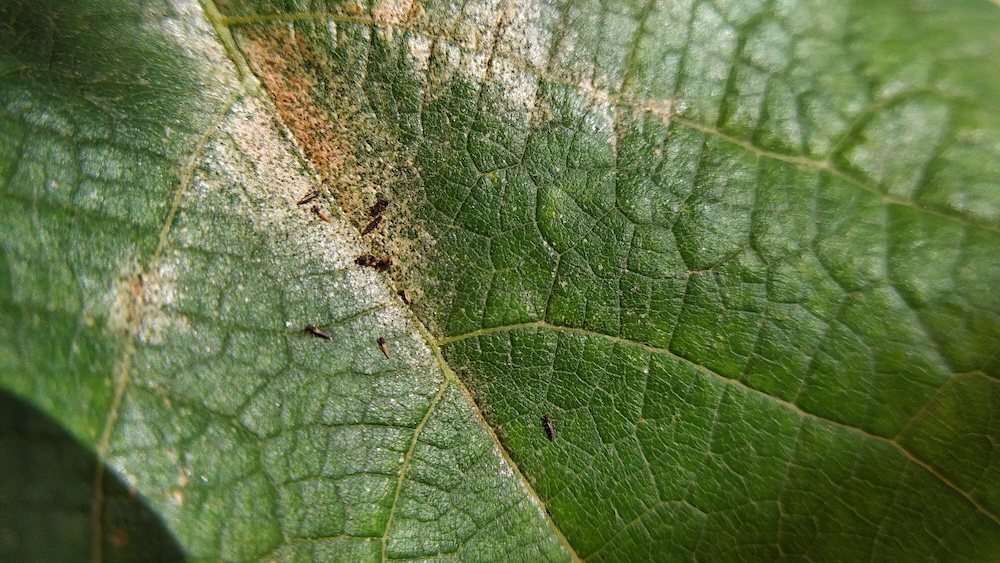
Diseases of passion flowers
- Soil-Borne diseases & fungi: Passion flowers can fall victim to diseases such as Fusarium Wilt and viruses like cucumber mosaic. Management includes:
- Fusarium wilt: Characterized by yellowing leaves and splitting branches. Ensure proper drainage and avoid waterlogging to mitigate risks.
- Cucumber mosaic virus: Causes mottled leaves and stunted growth. Remove and destroy infected plants to prevent spread.
- Bacterial spot: This challenging disease, caused by Xanthomonas, requires removing affected plants to control its spread.
Nutrient deficiencies & environmental stress
- Yellowing leaves: Can indicate underwatering, cold stress, or nutrient deficiencies. Testing the soil helps identify and rectify missing nutrients.
- Managing invasive growth:
- Control overgrowth: If passion flower vines extend beyond desired areas, consider pruning or redirecting the growth. For shoots appearing on your side of a shared boundary, either snap off new shoots as they appear or use a targeted herbicide.
Passion flower FAQs
To ensure your passion flower thrives, follow these guidelines: Plant it in fertile, well-drained soil and position it in a sunny, sheltered area of your garden. The optimal planting time is in spring, post the last frost. During its blooming season from early summer to autumn, water the plant generously, especially in summer, but lessen the watering as winter approaches.
The perfect spot for your passion flower is against a sunny, south-facing wall or fence, in fertile, well-drained soil. Passion flowers require support to climb, such as a trellis, where they can use their tendrils to attach themselves once they start growing.
Yes, passion flowers do well in full sunlight but can also adapt to partial shade. They should be planted at the base of a supporting structure like a fence, trellis, or arbor, allowing them ample space to spread out.
Yes, it’s best to cut back passion flower in late winter or early spring before new growth begins. This helps promote healthy growth and flowering.
While some passion flower varieties can be vigorous growers, they are not generally considered invasive in the UK. However, it’s advisable to keep an eye on their spread and prune as needed to control growth.
Ready to go?
Armed with a little more knowledge, you should be well equipped to plant and care for your passion flower. In case you would like to more about different plants, we have articles on camellias, foxglove, sunflowers and many more.
Did you decide on your favourite passion flower variety yet? Let us know in the comments! There you can also post your questions, if you have any.
Happy gardening!
-
How to Grow Eucalyptus in British GardensWith a little love and care, eucalyptus trees can thrive in English gardens. Since they don’t germinate well without proper help, there are not considered invasive. So, there is no reason not to plant them if you enjoy their looks.Read more
-
Transform Your Garden with All-Year-Round Flowering PlantsDid you know you can enjoy blooming flowers even in January? With the right selection of all year round plants, there’s no need to wait until spring to add some colour to your garden.Read more
-
How to Create a Butterfly Garden: A Simple Guide for British GardensThe UK's butterfly population includes 59 different species. These beautiful winged creatures face a steady decline because of habitat loss, pollution and changing weather patterns. Your garden can become a vital link between nature reserves and natural habitats. Let’s explore how.Read more
-
Volcanic Rock Dust for Your Garden—Application and TipsDid you know that volcanic rock dust is a brilliant organic soil improver? This article explains exactly what it's good for and how to use it properly.Read more
-
How to Use Landscape Fabric ProperlyIf weeds or erosion in your garden are troubling you, landscape fabric might be the solution. We’ll explain how and when to use it properly, just keep on reading.Read more
-
Hostas: A Complete Care GuideIf you have a north-facing garden or some shady corners on your property, hostas are the plants for you. These green delights thrive particularly well in partial to full shade and require consistently moist soil to perform at their best.Read more
-
How to Grow Grapes in Your Garden: A Simple Step-by-Step GuideGrapevines produce some tasty fruits, but often they are simply grown for their gorgeous leaves. Whatever your motivation may be, we have a guide on how to grow grapes for you.Read more
-
Worm Composting Made Simple: From Kitchen Scraps to Garden GoldDid you know that a single pound of composting worms can devour half their body weight in waste every day? That's roughly twelve pounds of kitchen scraps transformed into garden gold each month! We will look at how to make this happen.Read more
Leave a comment
Your answer will be displayed on the site and the interested party will be notified by email.
Leave a comment
Have a question or want to share your experience? Leave us a comment.

- Order by 2PM = shipped today
- 250.000+ satisfied customers!
- 60 day satisfaction guarantee

- Order by 2PM = shipped today
- 250.000+ satisfied customers!
- 60 day satisfaction guarantee

- Order by 2PM = shipped today
- 250.000+ satisfied customers!
- 60 day satisfaction guarantee

🌱 All important maintenance moments for your lawn during the year. Leave your email and we will send you the lawn calendar for free.
Enter your email
Receive the lawn calendar in the mail
Enjoy a green lawn all year round!












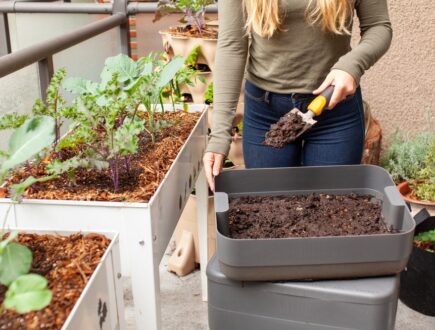








Comments (0)
There are no comments yet. Well then, what are you waiting for to
Be the first to write your comment!inaugurate this pretty page?
Do you have some comments?